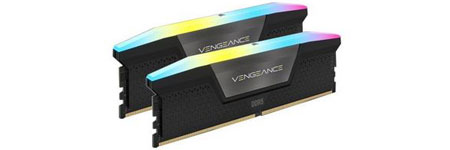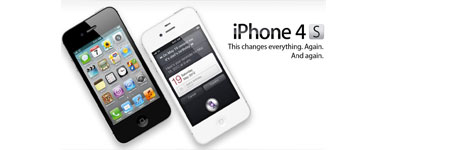RAM compatibility and Network cards.


Understanding RAM Compatibility
When purchasing RAM, ensuring compatibility with your system is crucial. Different versions of DDR RAM (DDR, DDR2, DDR3, DDR4, and DDR5) exist, each with unique configurations. These versions are not interchangeable. For instance, if your computer has DDR3 slots, only DDR3 RAM modules will be compatible.
RAM sticks are available in two primary forms:
- DIMM (Dual Inline Memory Module): Used in desktop computers.
- SODIMM (Small Outline DIMM): Used in laptops.
A lesser-known RAM type is Rambus (RDRAM), which features a distinctive metal covering that acts as a heat sink.
Error Detection and Correction in RAM
- Parity RAM: Includes an extra bit per byte to detect errors but increases cost.
- Non-Parity RAM: Uses only eight bits per byte, making it more affordable but unable to detect errors.
- ECC (Error Correction Code) RAM: Can detect and correct memory errors, commonly used in high-end servers.
- Non-ECC RAM: Lacks error correction capabilities and is cheaper, making it ideal for desktop systems.
Most operating systems and applications include built-in routines for basic memory error detection and correction, reducing the necessity of ECC RAM for consumer use.
Optimizing RAM Performance
- Dual-Channel RAM: Enhances performance by combining two memory slots into one bank. To maximize efficiency, always install matched RAM sticks in the same-colored slots.
- Clock Speed Considerations: RAM modules operate at the lowest speed among installed sticks. For example, if you install a 1600 MHz module alongside a 1333 MHz module, both will run at 1333 MHz.
- DDR Naming Convention: The standard naming format for DDR memory includes the type (DDR, DDR2, DDR3, etc.) followed by its speed, such as DDR3-1600.
Network Interface Cards (NICs) and Expansion Cards
Expansion cards enhance computer functionality. A sound card, for example, improves audio quality over onboard sound systems. When installing an expansion card, always disable conflicting onboard devices to prevent system conflicts.
Common Issues with Expansion Cards
- Graphics Card Power Requirements: PCIe graphics cards require power from a 6-pin or 8-pin power connector. Inadequate power supply can lead to performance issues.
- Driver Updates: If a new expansion card malfunctions, check the manufacturer’s website for updated drivers.
Network Interface Cards (NICs)
A NIC (Network Interface Card) is often added to replace a failed onboard NIC or to upgrade network speed. If your system’s built-in NIC supports 100 Mbps but your network runs at 1,000 Mbps, adding a higher-speed NIC improves connectivity.
Multi-Homed Computers and NIC Teaming
- A multi-homed computer has two NICs, allowing it to connect to multiple networks.
- NIC Teaming (Link Aggregation): Uses two NICs to boost data throughput and improve redundancy.
- Most NICs utilize 8P8C connectors (commonly mistaken as RJ-45) with twisted-pair cables but may support other connection types.
Conclusion
Understanding RAM compatibility and expansion card installation is essential for optimal computer performance. When upgrading RAM, always ensure compatibility with your system’s motherboard, and for network upgrades, consider NIC specifications to maximize connectivity speed.
Precisely What Is Stand Out Regarding The Iphone 4?


What Makes the iPhone 4 Stand Out?
The internet is filled with useful information for anyone new to the iPhone 4. Read on to discover some excellent tips for making the most of your device.
Handling Water Damage
Accidents happen, and dropping your phone in water is common. Instead of using a blow dryer, dry it with paper towels and place it in a sealed bag filled with rice to absorb the moisture.
Location-Based Reminders
With the iPhone 4, you can set reminders based on your location. Instead of setting a time-based alert, you can ask Siri to remind you of a task when you arrive at a specific place, such as home or work.
Syncing Email Accounts
If you use multiple email accounts, you can sync them all to your iPhone. This feature allows you to manage all your emails from one place.
Creating App Shortcuts
You can convert frequently visited websites into app-like icons on your home screen. Simply visit the website, tap “Go,” and then select “Add to Home Screen.”
Customizing Shortcuts and Dictionary
Your iPhone allows you to create personalized shortcuts and a custom dictionary. This makes typing faster by automatically correcting and predicting frequently used words and phrases.
Using Special Characters
Need accented letters? Press and hold a letter key, and a menu with variations will appear for you to choose from.
Visual Notifications
Activate LED flash alerts for calls and messages. Go to Settings > Accessibility and enable “LED Flash for Alerts.”
Managing Photos Efficiently
The iPhone’s camera is powerful, but managing photos can become overwhelming. Use the built-in folder options in the gallery to categorize your images and find them quickly.
Taking Screenshots
To capture a screenshot, press the Home and Sleep buttons simultaneously. The screen will flash white, and the screenshot will be saved in your Photos app.
Avoiding Suggested Words
If you don’t want to use the suggested words while typing, simply tap anywhere on the screen to dismiss them instead of selecting “X.”
Marking Emails as Unread
To mark an email as unread, swipe left on the email and select the “Mark as Unread” option.
Quick Access to iPod Controls
For instant access to music controls, go to Settings > General > Home Button and customize double-tap actions.
Deleting Emails Quickly
Swipe left across an email in your inbox to reveal the delete button and remove unwanted messages instantly.
Managing Apps
Avoid installing too many unnecessary apps, as some may contain hidden charges or collect your data without consent.
Navigating Safari Efficiently
Scrolling through small windows in Safari can be tricky. Use two fingers to scroll through the inner window instead of the entire page.
Backing Up Contacts
Use the iDrive Lite app to back up your contacts. This app allows you to restore contacts easily in case of data loss.
Customizing Alert Tones
Make your iPhone unique by changing alert tones for texts, voicemails, and notifications. Go to Settings > Sounds to explore new tones.
Using the iPhone’s Camera
The iPhone’s built-in camera is high-quality, making it unnecessary to carry a separate camera. You can store unlimited photos and transfer them to your computer effortlessly.
Closing Background Apps
To improve battery life, close unused apps running in the background. Double-tap the Home button, find the app, press and hold it, then tap the red minus icon.
Finding Your Lost iPhone
Enable the “Find My iPhone” feature to locate your lost device. You can also remotely lock or erase your data for security.
Faster Website Navigation
Skip typing “www.” and “.com” when entering URLs in Safari. For example, just type “Apple” instead of “www.apple.com.”
Downloading Custom Sounds
Personalize your iPhone by downloading new ringtones and notification sounds from the Sounds menu.
By utilizing these tips, you can maximize your iPhone 4’s potential and enjoy a smoother, more efficient user experience.
